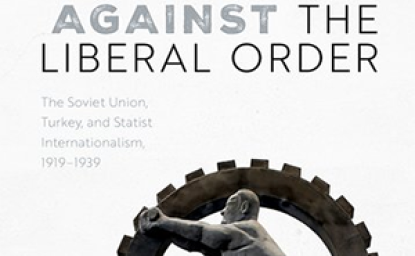NPIHP is pleased to announce that 2011 Nuclear Boot Camp participant Mara Drogan has defended her dissertation, and will receive her Ph.D. with distinction from the University at Albany.
Drogan's dissertation, Atoms for Peace, US Foreign Policy, and the Globalization of Nuclear Technology, 1953-1960, analyzes the bilateral agreements for cooperation on the peaceful uses of nuclear energy enacted under President Eisenhower's Atoms for Peace program from 1953 to 1960. It challenges previous representations of Atoms for Peace that depict it as a legitimate attempt at arms control or dismiss it as a mere propaganda campaign. Atoms for Peace, Drogan argues, was not intended to be a disarmament measure. Instead, it united nuclear, economic, and foreign policy objectives in a synergistic program intended to fulfill a number of postwar aims: blunting nuclear fears in order to quiet criticisms of the American nuclear project, supporting postwar development projects while encouraging American businesses, and cementing old alliances while creating new ones. Using case studies of U.S. relations with nations around the globe, Drogan makes the case that the bilateral agreements and the resulting technology exchanges denote an important shift in U.S. foreign policy in the mid-1950s. They represent a new atomic diplomacy that remade the political and technological map through the export of knowledge, fissionable material and equipment.
Although Eisenhower was the instigator of the program that became known as Atoms for Peace, he is surprisingly absent from Drogan's dissertation. He quickly delegated responsibility for the program to the Atomic Energy Commission and the State Department. Key decisions were made at the staff level. When they were involved in setting Atoms for Peace policy, with a few exceptions Eisenhower, John Foster Dulles, and the National Security Council chose among a limited set of options drawn up by their staffs.
Along with highlighting the role of mid-level bureaucrats in formulating nuclear power policy, Drogan's dissertation shows that the policy process was complicated by the multiple aims and aspirations of the participants. US officials hoped that the propagandistic potential for Atoms for Peace would shore up American authority and influence worldwide but nations in Europe, Africa, Asia, and South America made use of American aid in unpredicted ways to stake out their own claims to techno-political power, challenging US dominance in the process. Motivated by considerations of propaganda and spurred by techno-utopianism, members of the Eisenhower Administration sought to make civilian nuclear technology an ideological, political, and economic tool of foreign policy. But the international market for nuclear technology which emerged as a result would prove to be an unpredictable and often unwieldy instrument of foreign policy.
For additional information, write to Mara Drogan.






